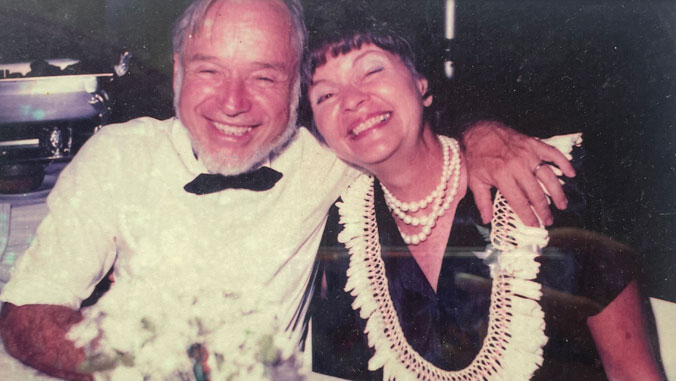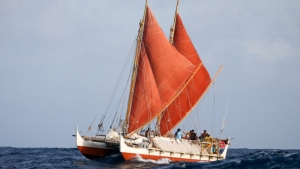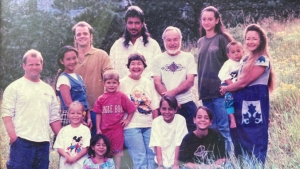
Like water to a fern, the knowledge and guidance kumu (teachers) instill within their haumāna (students) can provide life-changing inspiration. Former colleagues and students of University of Hawaiʻi at Mānoa English instructor Nancy Carolyn Alpert Mower say it’s the kind of connection she shared with so many around her.
“Nancy was a committed and careful teacher, an active participant in department life, and a respected colleague,” said Georganne Nordstrom, UH Mānoa English Department associate chair.
Glenn Man, an English professor at UH Mānoa recalls her positive spirit. “I don’t think I ever saw her in a bad mood; she was always upbeat and smiling, just a good person to be around.”
Mower, 88, died in July, but even as loved ones lament, they also relish her contributions to literacy in Hawaiʻi. Mower’s teaching career at UH Mānoa began after she earned a master’s degree in English from the university in 1985. Her love of teaching was shared with her late husband, Professor Howard Frederick Mower, a respected bio-chemist who taught at UH for nearly 50 years and helped mold hundreds of Hawaiʻi’s doctors.
“Nancy regularly taught in the English department’s First Year Writing and Introductory Literature programs, and was one of the founders of the Biennial Conferences on Literature and Hawaiʻi’s Children, securing and administering National Endowment for the Humanities grants to support the conference,” said Nordstrom. “Nancy went on to direct the conference three times and helped to establish Children’s Literature Hawaiʻi as a non-profit organization.”
Mower, a Colorado-native, was intrigued by Hawaiʻi’s host culture. She became determined to write stories for keiki after discovering her own children weren’t learning about Hawaiian ancestral knowledge and traditions.
“She was appalled by the absence of exposure to Hawaiian culture in those schools,” said Carol Ioane, the eldest of Mower’s four children and a UH Mānoa elementary education alumna. “She felt the need to contribute to a body of literature that could be utilized as a vehicle for sharing the beauty and vitality of the Hawaiian culture, at the elementary school level. Her hope was that through these stories, students would be motivated to further research the richness of the Hawaiian culture on their own.”

Her children recall Mower being an avid researcher, immersing herself in readings that detailed the vibrance of Hawaiian culture and the richness of Hawaiian intelligence. She would go on to publish seven children’s books such as Sugar Cane Magic, I Visit Tūtū and Grandma and Tūtū’s Stories. Mower also authored works for keiki based on voyaging canoe Hōkūleʻa, which detailed traditional Hawaiian aspects of its navigation methods. She used those works to help develop, Polynesian Seafaring Heritage, a series of four books and curriculum formed for elementary schools based on the Hōkūleʻa. Her desire to write about Hawaiian knowledge wasn’t only limited to keiki. Mower also published an assortment of culturally based short stories and academic articles.
UH Mānoa English Professor Kristin McAndrews attended graduate school with Mower in the 1980’s and later as colleagues co-wrote a literacy development course for the Hawaiʻi State Department of Education. “Nancy was delightful, kind, focused and determined,” McAndrews recalls. “Her stories of childhood, her family and her husband were poignant and beautifully written.”
Commitment to uplifting haumāna
Aside from teaching, Mower helped support aspiring students monetarily. She started a women’s studies scholarship at UH Hilo in memory of her late sister, Barbara.
In 2001, Mower retired from UH Mānoa but continued teaching as a volunteer at the university. “She witnessed firsthand the struggles that many UH Mānoa freshmen experienced in English 100,” Ioane explained. “She knew that without a strong foundation in English, further collegiate studies would be extremely difficult for them. As she aged, she began working more at the night school for continuing education.”
Nā liko (buds) spring forward

Her commitment to shaping students inspired former pupils and loved ones to become kumu. Ioane followed Mower and has taught for the past 35 years, a majority as a Hawaiian immersion school teacher. Several grandchildren also took up careers in education. Others, like granddaughter Keahialaka Ioane, who is pursuing a master’s degree in Hawaiian Studies at UH Mānoa, emulate Mower’s passion for writing.
The 31-year-old is preparing to produce a documentary on respected Hawaiian activists on Hawaiʻi Island during the Hawaiian renaissance of the 1970s. “I became aware of a kuleana I may have in this specific field because these stories are sensitive and their characters are equally fading fast and highly protective of their stories,” Ioane said.
Mower’s ʻohana has set up a remembrance page online for haumāna and colleagues to share stories and recollections.
This work is an example of UH Mānoa’s goals of Enhancing Student Success (PDF) and Becoming a Native Hawaiian Place of Learning (PDF), two of four goals identified in the 2015–25 Strategic Plan (PDF), updated in December 2020.

